I get a real sense of connection every time I wear Native American jewelry. These pieces have so much meaning for me. I’ve found great joy collecting various styles and learning where each comes from. True Native jewelry keeps its value, and that’s another reason I love having a collection. Beyond the aesthetic appeal, I appreciate the craftsmanship and stories passed down through each piece. Checking out new designs helps me track down the rich traditions and artistry embedded in every item. Owning such jewelry feels like holding a piece of history, making the experience truly fulfilling.I get a real sense of connection every time I wear Native American jewelry. These pieces have so much meaning for me. I’ve found great joy collecting various styles and learning where each comes from. True Native jewelry keeps its value, and that’s another reason I love having a collection. Beyond the aesthetic appeal, I appreciate the craftsmanship and stories passed down through each piece. Checking out new designs helps me track down the rich traditions and artistry embedded in every item. Owning such jewelry feels like holding a piece of history, making the experience truly fulfilling.
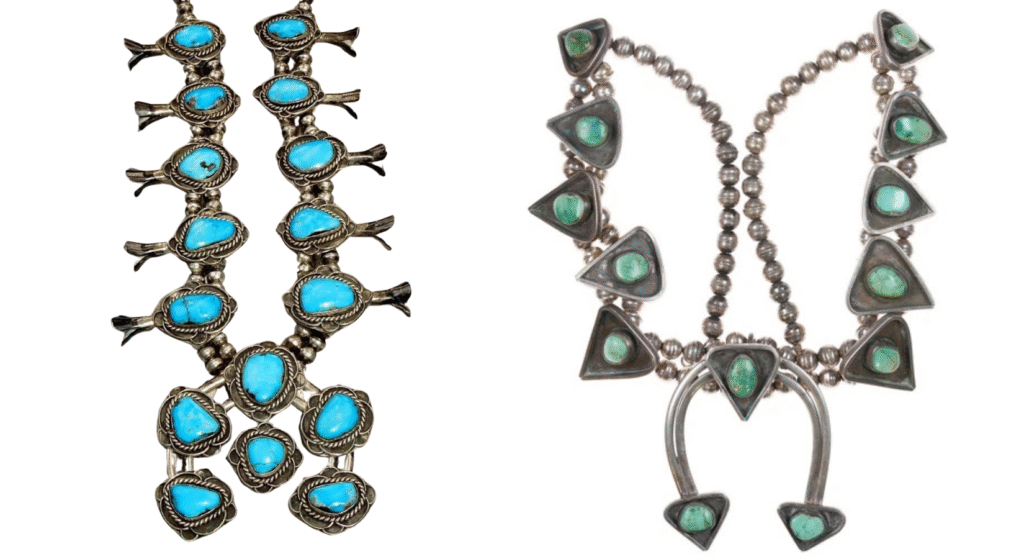
Native American jewelry isn’t just shiny stuff to put on your body. It’s a treasure trove of culture and history wrapped in stunning craftsmanship. For many tribes, these pieces are a way to showcase their rich heritage and unique identities.
Back in the day, jewelry wasn’t just for looking good—it told stories. Every chunk of turquoise or silver bead was a chapter of that narrative. It ties wearers to the earth, to their tribe, and to their ancestors in a pretty profound way.
You’ll find that different tribes have their own signature styles and symbols, kind of like a visual language passed down for generations. From the Zuni’s intricate stone inlays to the Navajo’s bold silverwork, each piece can represent a unique story or belief tied to their culture.
Jewelry also held spiritual significance. Many believed certain stones and designs could bring luck, protection, or mark a rite of passage. These days, while the spiritual meanings might vary, the deep connection to roots and traditions remains as vibrant as ever.
Early Beginnings: Tracing the Origins of Native American Jewelry
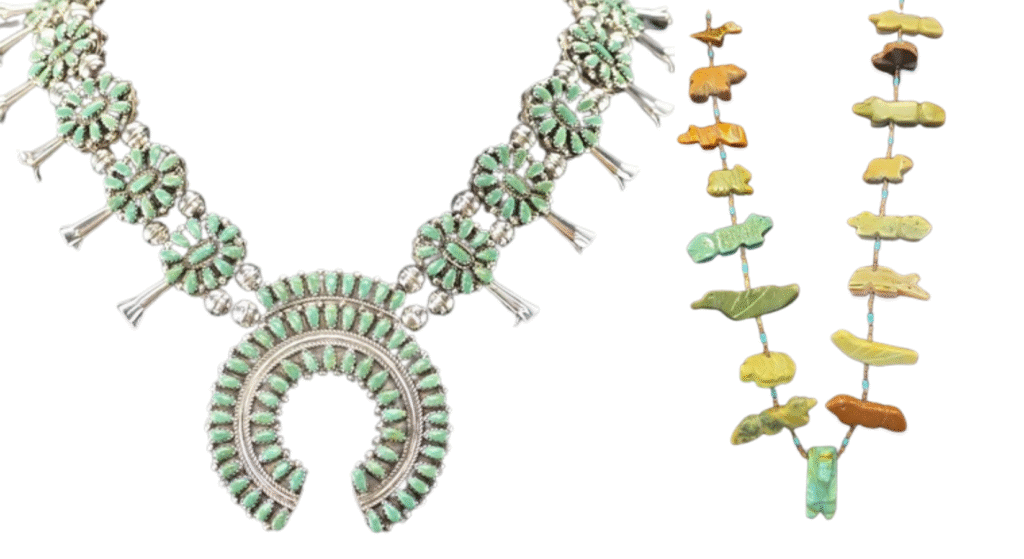
The story of Native American jewelry kicks off way earlier than you might think. Imagine a time when ancient tribes crafted beautiful pieces from the resources around them. They dug up stones, polished shells, and even used bones to make the first known jewelry pieces.
Mother Nature provided the palette, and early artisans didn’t hesitate to use whatever they found—be it turquoise shimmering like the sky or shells offering a glimpse into the sea. These elements formed the basis of many designs, highlighting a brilliant connection to the natural world.
Across the vast stretches of North America, styles varied like weather patterns. Southwestern tribes might have favored turquoise, while those in regions abundant with freshwater beds made pearls and riverbed stones their go-to.
These early pieces weren’t slapped together without thought—they carried meanings and symbolized various things like status, accomplishments, or even connections to the spiritual realm. Today, each piece continues to relay this rich historical tapestry as a tribute to its origins.
Evolution Through Time: Development of Techniques and Styles
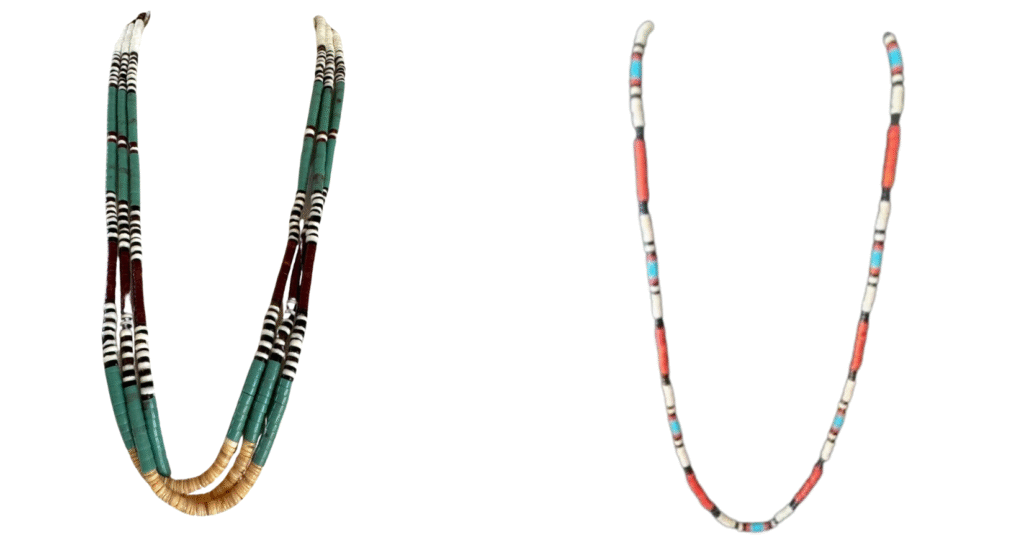
- As we zip through time, Native American jewelry didn’t just stay the same—it got cooler and more complex. Early beads and stones evolved into dazzling displays of metalwork and intricate patterns, especially as skills and materials changed.
When European settlers came into the picture, everything kicked up a notch. New materials like silver became readily available, and Native artisans started blending these metals with their traditional designs. This merger created unique styles that still carry hallmark elements of authenticity and creativity.
Each tribe embraced its individuality, showcasing it through distinct jewelry-making techniques. The Hopi started using silversmithing with a flair for overlay designs, creating layers of stories within a single piece. Meanwhile, Navajos mastered silversmithing, setting the stage for bold, eye-catching bracelets and concha belts.
Contemporary Native artists continue to innovate while paying homage to their ancestors’ traditions. Melding ancient techniques with fresh designs, today’s creations reflect a living history that adapts yet respects its roots. Keeping an eye on these evolving techniques can help us appreciate the journey of these cultural treasures.
The Significance Behind the Designs
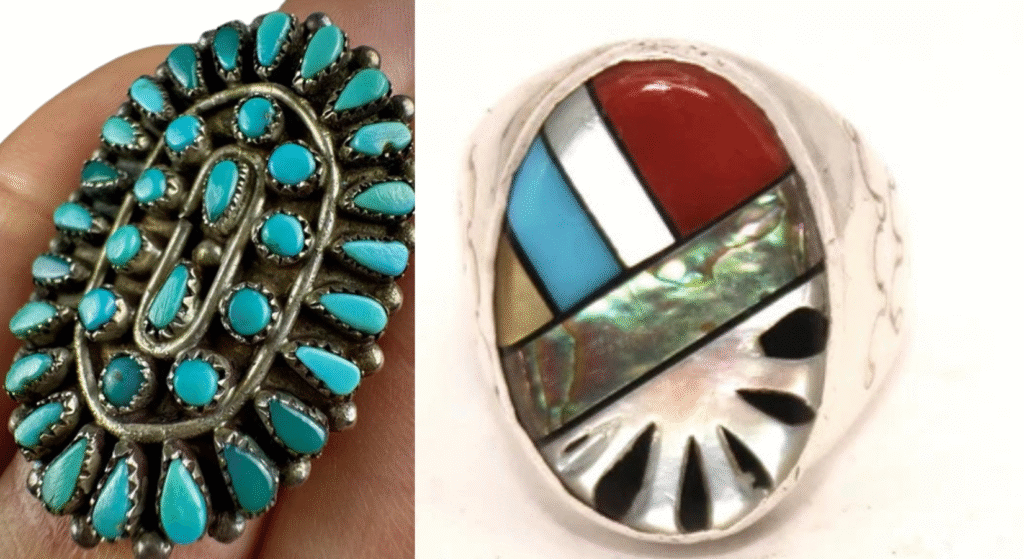
Native American jewelry is pretty loaded with meanings and stories, way more than it seems at a glance. The craftsmanship is meticulous, but it’s the designs and motifs that carry real depth: they tell tales of heritage, beliefs, and cultural identity.
Patterns and symbols vary widely among tribes, each with its own flair. Floral designs might flourish in one area, while geometric shapes dominate elsewhere. These aren’t just random choices: they’re visual stories of tribe history, beliefs, or a worldview.
Natural elements inspire a lot of designs. From waves symbolizing life’s ebb and flow to eagles representing freedom, nature often leads the narration. The belief that humans are part of a greater natural order shapes these pieces into wearable reflections of spirituality.
Colors play a crucial role too. Think of the bright blues of turquoise or the fiery reds of coral. Each color choice is deliberate, often symbolizing power, protection, or a spiritual message tied to the earth and sky.
Storytelling through jewelry remains pivotal, not just through traditional symbols but also in modern interpretations. Today’s designers often embed personal narratives or contemporary issues into their art, keeping the tradition of meaningful adornments alive. Understanding these intricate tales enriches our appreciation of Native American jewelry beyond its beauty.
Signing Jewelry: A Modern Tradition with Historical Roots

Jewelry has long been an essential cultural artifact among Native American tribes, reflecting stories and traditions. But there’s a twist in the narrative—signing these pieces by their creators. This practice brings a modern dimension, adding layers of meaning and value.
The tradition of signing jewelry didn’t start way back in the earliest times; it gained traction as the market for Native American art expanded. Signing a piece is a way for artists to assert authenticity and craftsmanship, ensuring their work is recognized as genuinely theirs.
For collectors and enthusiasts, a signature offers assurance. It’s like a badge of honor that tells you, ‘Yep, this piece is the real deal.’ In an age where knock-offs exist, that tiny inscription is crucial for authenticity and preserves the cultural integrity of the work.
Some names have become almost legendary. Artists like Charles Loloma and Jesse Monongye didn’t just leave signatures but set new standards in Native jewelry creation. Their works fetch significant attention and respect in galleries worldwide, with their signatures boosting desirability and worth.
Signing doesn’t just protect authenticity; it’s also a nod to the artists’ pride in their heritage and craft. It’s a complex blend of art, culture, and personal expression, marking the evolution of tradition in step with modern commerce. Recognizing this tradition enriches the jewelry’s cultural and monetary value.
Native American Jewelry and Cultural Appropriation
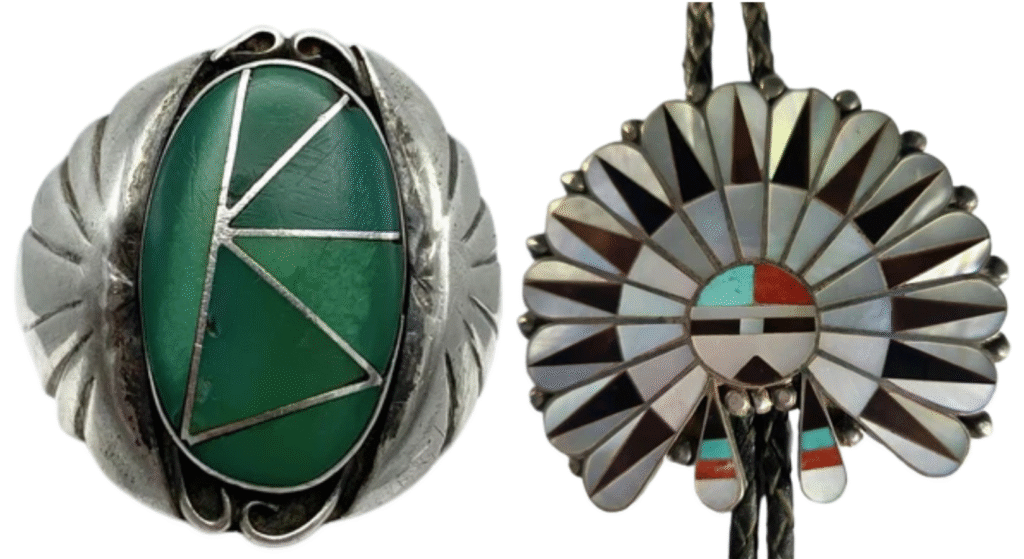
Wearing Native American jewelry requires a little bit of awareness and respect. Appreciating a culture’s artistry is great, but it’s a thin line between appreciation and appropriation.
Cultural appropriation happens when elements of a minority culture get used by those in the majority without understanding or respecting the original meaning. In the case of Native American jewelry, appreciation means recognizing the heritage and history behind a piece, not just how cool it looks.
If you’re drawn to these beautiful pieces and want to wear them, keeping a few guidelines in mind is essential. First off, buying directly from Native artisans or reputable retailers ensures authenticity and supports the communities keeping these traditions alive.
Understand the origins and significance of what you’re wearing. Many designs carry spiritual and historical meanings unique to their creators. Knowing these stories not only shows respect but enhances your own connection with the piece.
Feedback from Native communities highlights the importance of mindful engagement. Wearing Native American jewelry isn’t about making a fashion statement—it’s about honoring the culture it represents. Discussions and learning can guide you to appreciate these works as cultural art, rather than mere accessories.
The Role of Jewelry in Modern Native American Identity
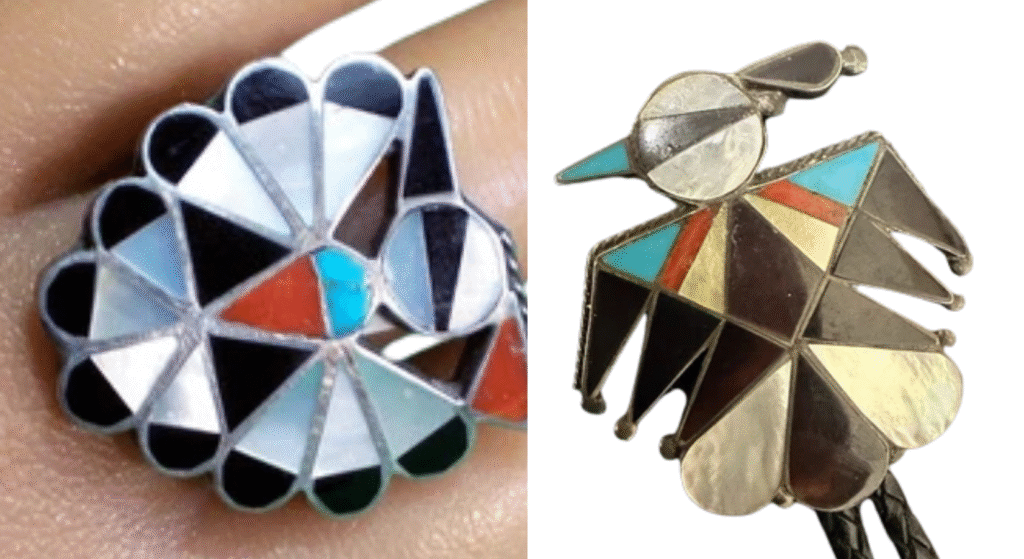
Jewelry continues to be a dynamic thread in the fabric of modern Native American identity. It’s not just a showcase of craftsmanship but a powerful way to keep traditions alive and relevant in today’s world.
For many young Native artists, creating jewelry is like holding a conversation with their ancestors. They’re diving into age-old techniques passed down through generations, honoring them while adding their own twists to reflect contemporary narratives.
This crafting process becomes a form of cultural revitalization, helping to preserve ancient techniques that might otherwise fade away. By keeping traditional methods alive, artists ensure that cultural identities and techniques don’t just survive—they thrive and evolve in exciting ways.
Modern Native artists are pushing boundaries, blending traditional styles with a fresh perspective that resonates with new audiences. Whether it’s incorporating modern materials or drawing inspiration from today’s issues, there’s a vibrant, evolving spirit in every piece.
Jewelry isn’t just about looking back, though. It tells stories of present-day identity and vision for the future. These pieces can be a shout-out to resilience, adaptability, and the unique journeys of Native people in the modern era. Embracing both heritage and innovation, Native American jewelry remains a living art form, bridging time and tradition with creativity.
Ethical Considerations: Supporting Authentic Native American Crafts
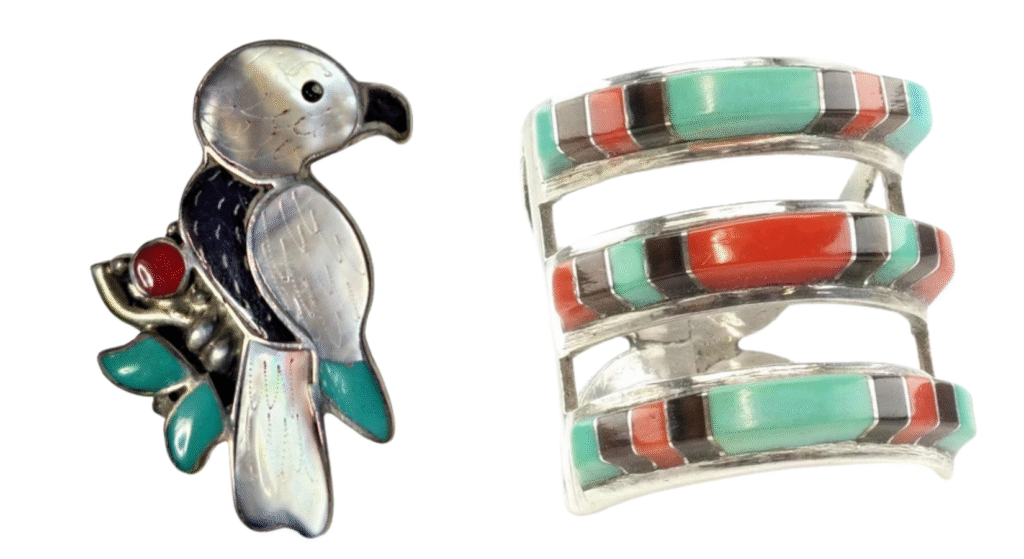
Navigating the world of Native American jewelry isn’t just about spotting a pretty piece—it’s about making a choice that respects and supports authentic artisans. Authenticity is a big deal because it respects the cultural roots of these designs while ensuring that the benefits go to the right people.
First thing to do? Make sure you’re buying genuine Native American jewelry. Counterfeit goods are out there, and they do a disservice to the artisans who pour their history and heart into their work. Look for certificates or documentation that confirm a piece’s origins and authenticity.
Support goes beyond just making a purchase—it’s about understanding and appreciating the artistry. Purchasing from artists directly or trusted sources helps keep the art form vibrant and sustainable, funneling returns back into the community and ensuring artists receive fair compensation for their work.
Knowing these distinctions doesn’t just benefit collectors or wearers—it’s crucial for the survival of these cultural expressions. When you buy authentic, you’re contributing to a cycle that values skill and tradition, allowing artists to continue their crafts for future generations.
The impact is personal and community-wide, empowering artists and helping preserve their heritage. Your choices as a consumer in this market carry weight, so opting for authenticity not only brings you closer to owning a piece of cultural heritage but also makes a meaningful contribution to the artists’ lives.
Conclusion: The Everlasting Legacy of Native American Jewelry
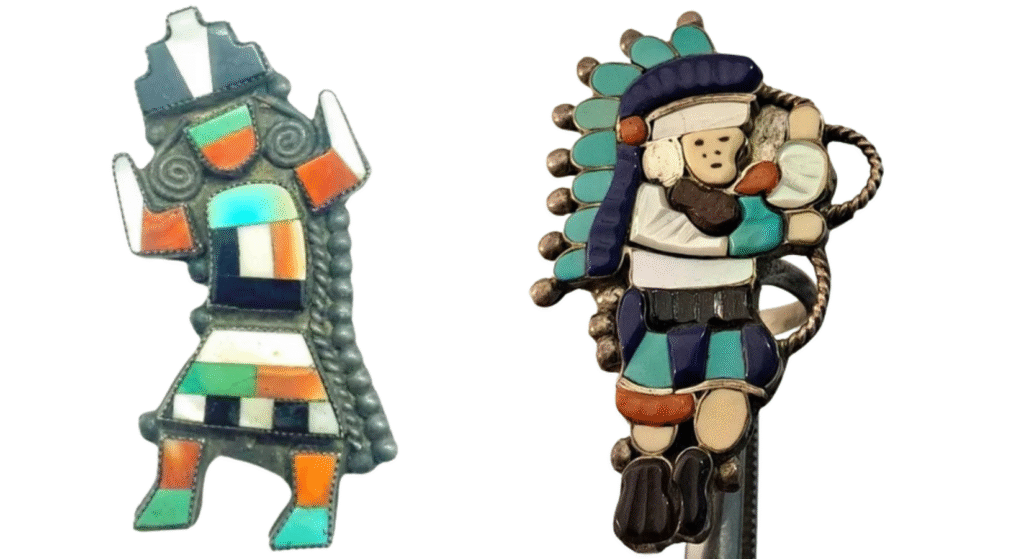
Native American jewelry is way more than just material adornment. It’s an enduring symbol of cultural resilience and creativity. Over centuries, these pieces have evolved, telling compelling stories of tradition and innovation in every design.
Each handcrafted piece is like a jewel in the timeline of Native American history, tightly woven with cultural significance and a tribute to artistic excellence. Today, as artisans balance the dance between ancient craftsmanship and modern creativity, they breathe life into both past and present.
For collectors and enthusiasts alike, these timeless treasures offer more than just aesthetic pleasure. They provide a connection to a rich narrative and a call to respect the cultural heritage they represent.
Looking to tomorrow, Native American jewelry shines brightly, promising continued evolution that honors tradition while inspiring new narratives. Supporting authentic crafts ensures these stories are told with integrity and grace.
As you explore this art form, remember that each piece is a thread in the larger tapestry of Native history, carrying forward a legacy of identity, beauty, and storytelling. Special care and respect can ensure that this legacy will continue to inspire for generations to come.
